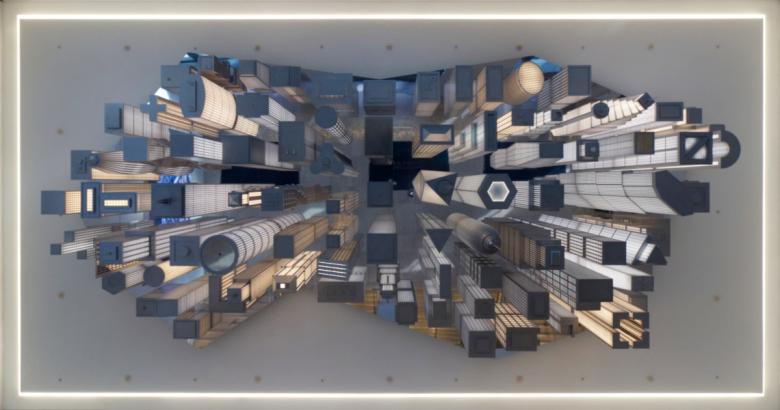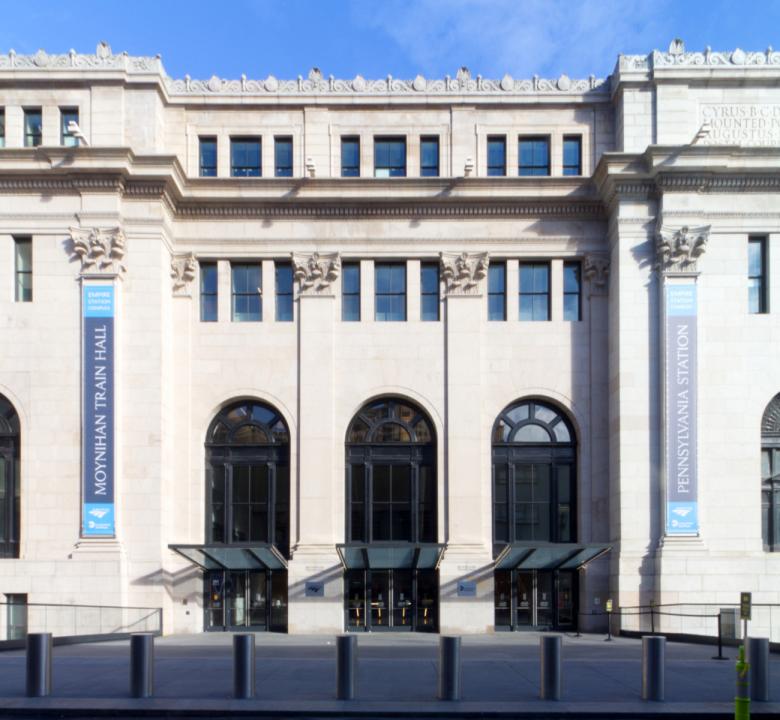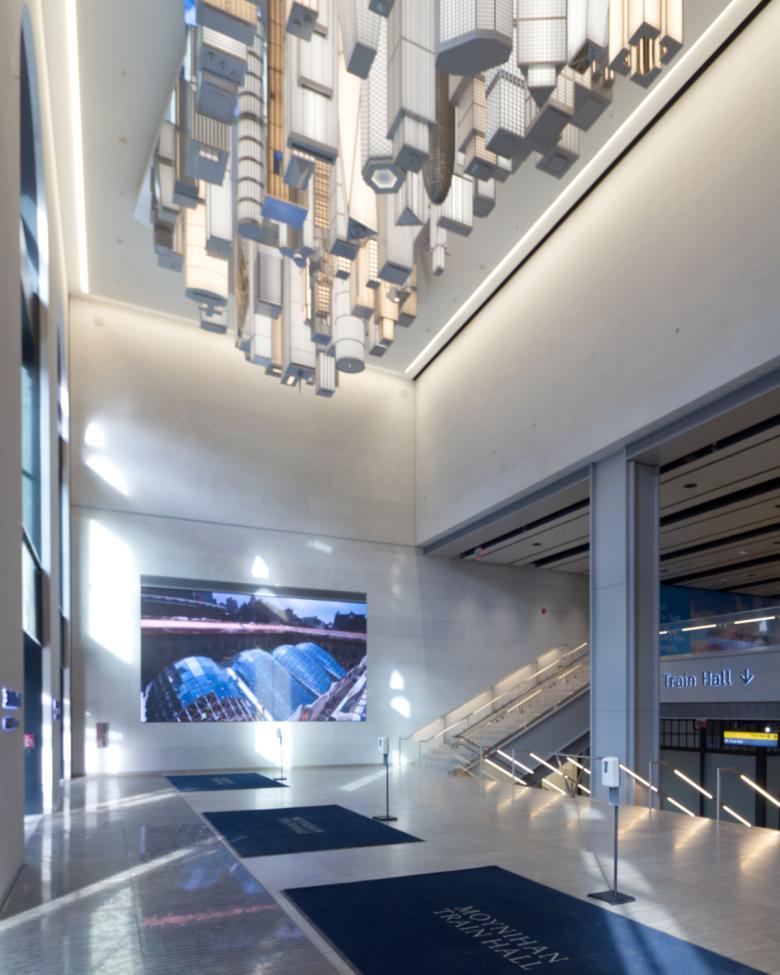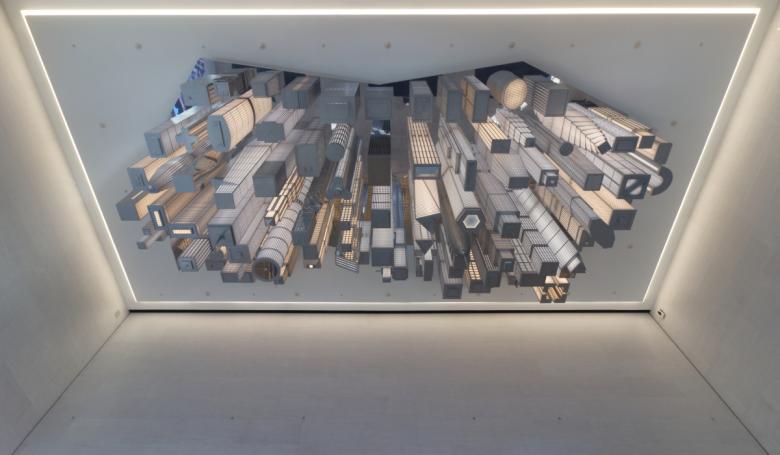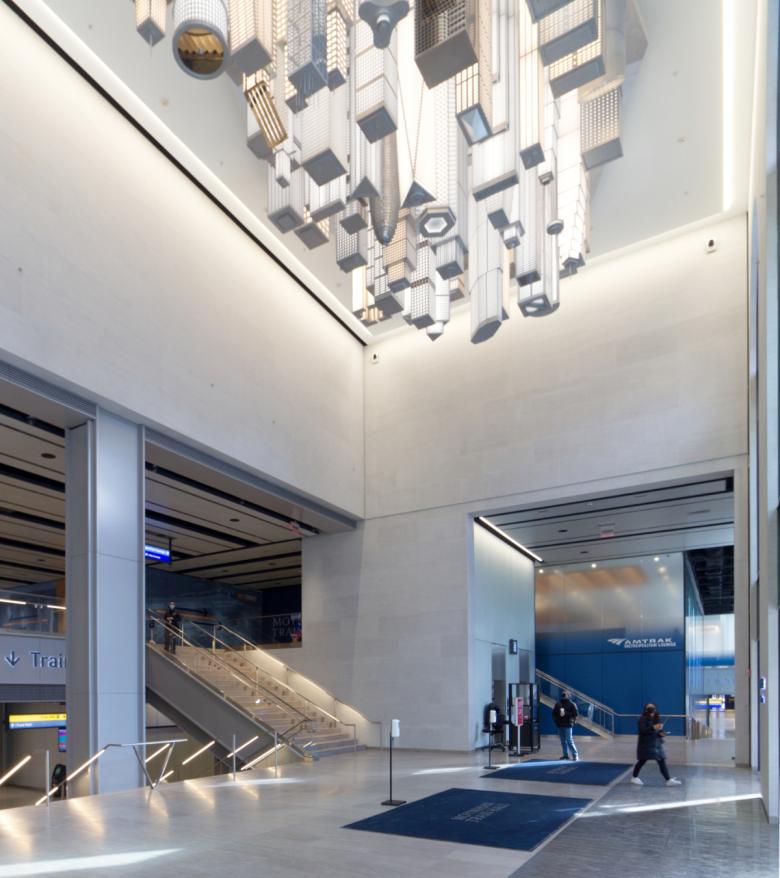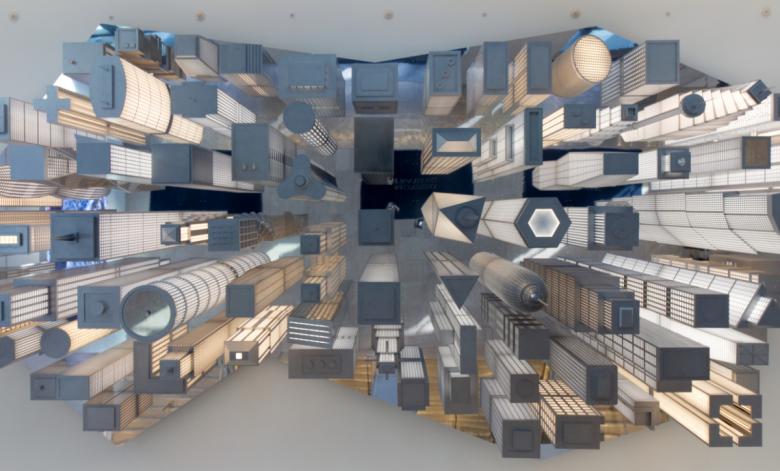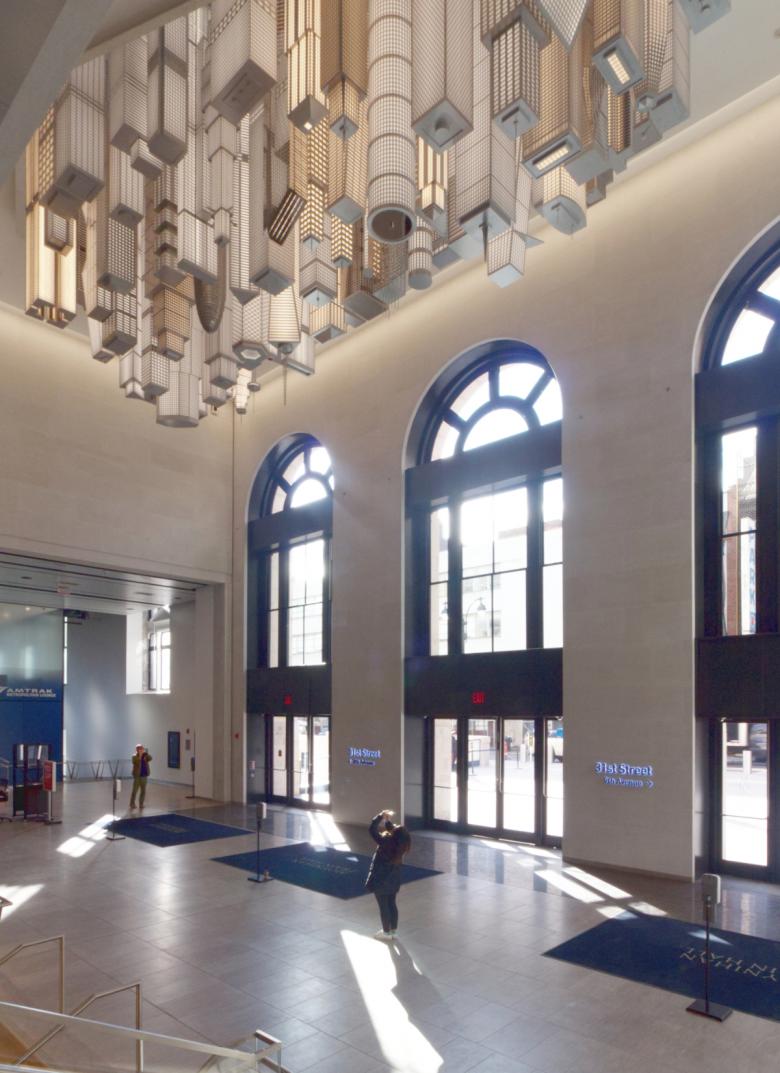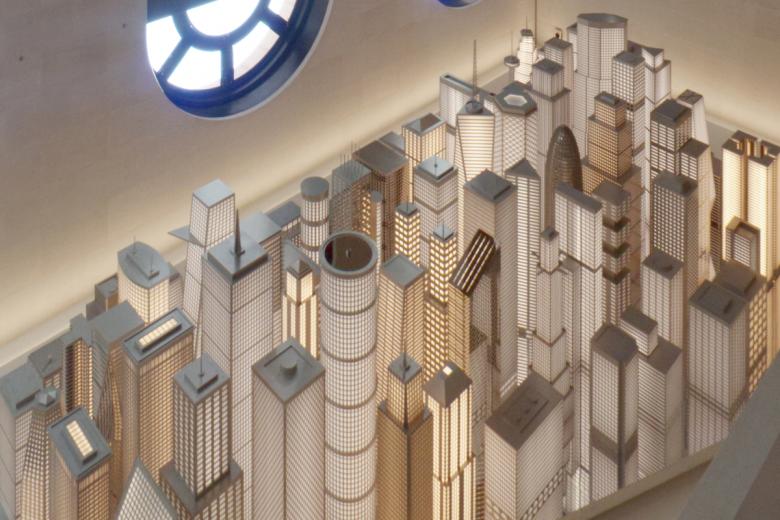'The Hive' at Moynihan Train Hall
John Hill
6. January 2021
All photos by John Hill/World-Architects
The Moynihan Train Hall at Pennsylvania Station opened inside the landmark James A. Farley Post Office Building in Manhattan on the first day of 2021. The design by Skidmore, Owings & Merrill — more than two decades in the making — is accompanied by other contributions, including a trio of permanent art installations. Here we focus on The Hive, a striking ceiling-mounted sculpture by artists Michael Elmgreen and Ingar Dragset.
Elmgreen & Dragset, as the artist-duo is known, created an inverted cityscape that is made up of 91 buildings; some of them are New York City icons, some are from other cities, and some are straight from the artists' imaginations. As described in a press release from the Public Art Fund, who commissioned the three installations, the artists labeled the work The Hive to "suggest a link between natural and human-made structures, like the complex and evolving architecture of a hive." But the assemblage of towers also resembles stalactites, "reminding us of our cavedweller origins."
Below is a visual tour of The Hive with photos taken on a visit to Moynihan Train Hall a few days after it opened. We'll have more coverage of SOM's project in the near future.
